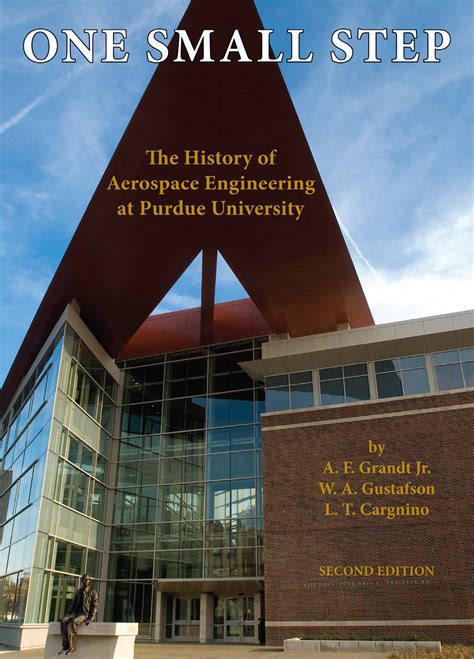For aspiring aerospace engineers, choosing the right undergraduate program is crucial to their future success. With the field rapidly advancing, it’s essential to attend a university that offers a rigorous curriculum, cutting-edge research opportunities, and industry connections.

Top-Ranked Aerospace Engineering Schools
According to the U.S. News & World Report’s 2023 Best Engineering Schools, the following universities rank highly for their undergraduate aerospace engineering programs:
| Rank | University | Location |
|---|---|---|
| 1 | Massachusetts Institute of Technology (MIT) | Cambridge, MA |
| 2 | Stanford University | Stanford, CA |
| 3 | Purdue University | West Lafayette, IN |
| 4 | University of Michigan | Ann Arbor, MI |
| 5 | University of Texas at Austin | Austin, TX |
| 6 | Georgia Institute of Technology | Atlanta, GA |
| 7 | California Institute of Technology (Caltech) | Pasadena, CA |
| 8 | University of California, Berkeley | Berkeley, CA |
| 9 | University of Illinois at Urbana-Champaign | Champaign, IL |
| 10 | University of Maryland | College Park, MD |
Factors to Consider When Choosing a School
Beyond rankings, there are several key factors to evaluate when selecting an aerospace engineering program:
-
Curriculum: Ensure the program aligns with your career aspirations and covers core aerospace engineering principles, such as aerodynamics, propulsion, and flight dynamics.
-
Faculty: Seek schools with renowned faculty who actively engage in research and have strong industry connections.
-
Research Opportunities: Look for programs that offer hands-on research experiences through internships, co-ops, and undergraduate research programs.
-
Facilities and Resources: Consider schools with state-of-the-art labs, wind tunnels, and computational tools that support student learning.
-
Location: Proximity to aerospace industry hubs can provide access to employers and internship opportunities.
Future-Oriented Aspects of Aerospace Engineering
The aerospace industry is constantly evolving, driven by advancements in technology and a growing demand for sustainable solutions. Consider programs that:
-
Embrace Emerging Technologies: Look for schools that incorporate emerging technologies, such as electric propulsion, artificial intelligence, and composite materials, into their curriculum.
-
Foster Innovation: Choose programs that encourage student innovation through competitions, design projects, and maker spaces.
-
Promote Sustainability: Seek schools that emphasize environmental responsibility and sustainable aerospace practices.
Tips and Tricks for Success in Aerospace Engineering
-
Excel in Math and Science: Aerospace engineering requires a strong foundation in math, physics, and chemistry.
-
Develop Problem-Solving Skills: Cultivate your ability to analyze problems and develop creative solutions.
-
Join Engineering Clubs and Organizations: Engage in extracurricular activities to network with peers and industry professionals.
-
Seek Internships and Research Experience: Gain practical experience through internships, co-ops, or undergraduate research projects.
-
Stay Updated on Industry Trends: Keep abreast of the latest advancements in aerospace technology by attending conferences and reading industry publications.
Comparison of Pros and Cons
Pros of Aerospace Engineering
-
Challenging and Rewarding Career: Aerospace engineering offers opportunities to work on cutting-edge projects that impact society.
-
High Demand: The aerospace industry is constantly in need of skilled engineers, ensuring job security and career growth.
-
Competitive Salaries: Aerospace engineers typically earn higher salaries than professionals in other engineering fields.
Cons of Aerospace Engineering
-
Rigorous Curriculum: Aerospace engineering programs are known for their demanding coursework and workload.
-
Competitive Admissions: Top aerospace engineering programs are highly competitive, requiring strong academic credentials and a passion for the field.
-
Specialized Field: Aerospace engineering is a specialized field that may limit career options in other industries.
FAQs
-
What are the career prospects for aerospace engineers?
– Aerospace engineers work in various industries, including commercial aviation, defense, and space exploration. They may design, test, manufacture, or operate aircraft, spacecraft, and aerospace systems. -
What are the highest-paying jobs in aerospace engineering?
– According to the Bureau of Labor Statistics, the highest-paying jobs in aerospace engineering include aerospace engineers, astronautical engineers, and spacecraft engineers, with median annual salaries ranging from $111,350 to $130,670. -
What is the difference between aerospace engineering and aeronautical engineering?
– Aerospace engineering encompasses both aeronautical engineering (which focuses on aircraft) and astronautical engineering (which focuses on spacecraft). -
Can I pursue a graduate degree in aerospace engineering?
– Yes, many universities offer master’s and doctoral degrees in aerospace engineering, allowing students to specialize in a particular area of interest. -
What are some innovative applications of aerospace engineering?
– Aerospaception: The use of aerospace technologies to develop solutions for challenges on Earth, such as disaster response and environmental monitoring. -
What are some interesting research areas in aerospace engineering?
– Hypersonic flight, biomimicry in aircraft design, and sustainable aviation are some of the exciting research areas in aerospace engineering. -
What are the job responsibilities of an aerospace engineer?
– Aerospace engineers typically design, analyze, and test aircraft, spacecraft, and associated systems. They may also conduct research and development, or work in manufacturing or maintenance. -
What is the average salary for an aerospace engineer?
– According to the Bureau of Labor Statistics, the median annual salary for aerospace engineers in May 2021 was $115,760.
